A crucial part of any disaster recovery is making sure production resources are able to be brought back online as quickly as possible. If you lose an entire site, you have to have a way to bring production virtual machines back on as quickly as possible. This generally is taken care of with replicating production data to a secondary site or DR facility. As you may or may not know VMware’s vSphere Replication software allows effectively replicating production virtual machine data from one site to another or even replicating data within the same site (although generally the whole purpose is to get your data to another location for availability purposes). VMware vSphere replication is available for free from VMware and is the basic component of VMware’s Site Recovery Manager when using native VMware products, although SRM can also be used with third-party data protection solutions that replicate data. VMware vSphere Replication 8.1 is the latest and greatest release of vSphere Replication that provides the replication of virtual machines in the vSphere environment. Let’s take a look at Installing and Configuring VMware vSphere Replication 8.1 in vSphere 6.7 and see what it takes to get the product stood up in a vSphere 6.7 environment along with setting up replication.
Installing and Configuring VMware vSphere Replication 8.1 in vSphere 6.7
For the purposes of this walk through, my lab environment is configured with a nested vSphere 6.7 environment. The VMware vSphere Replication install that I downloaded is the 8.1 version, file name is as follows:
- VMWare-vSphere_Replication-8.1.0-8744176
- Size is around 1.6 GB
The install is via an ISO image file. Simply mount the ISO and use it as the source of the OVF deploy from within vCenter Server.
Note On the below screenshots captured, I used the HTML5 UI for deploying the OVF template. While the template deploys just fine with the HTML5 UI, you will receive the following error when trying to power on the appliance. I want to save you the hassle that I ran into having to redeploy.
The virtual machine ‘vSphere_Replication’ has a required vService dependency vCenter Extension Installation’ which is not bound to a provider
You will have to redeploy the appliance using the FLEX client instead to avoid the error.
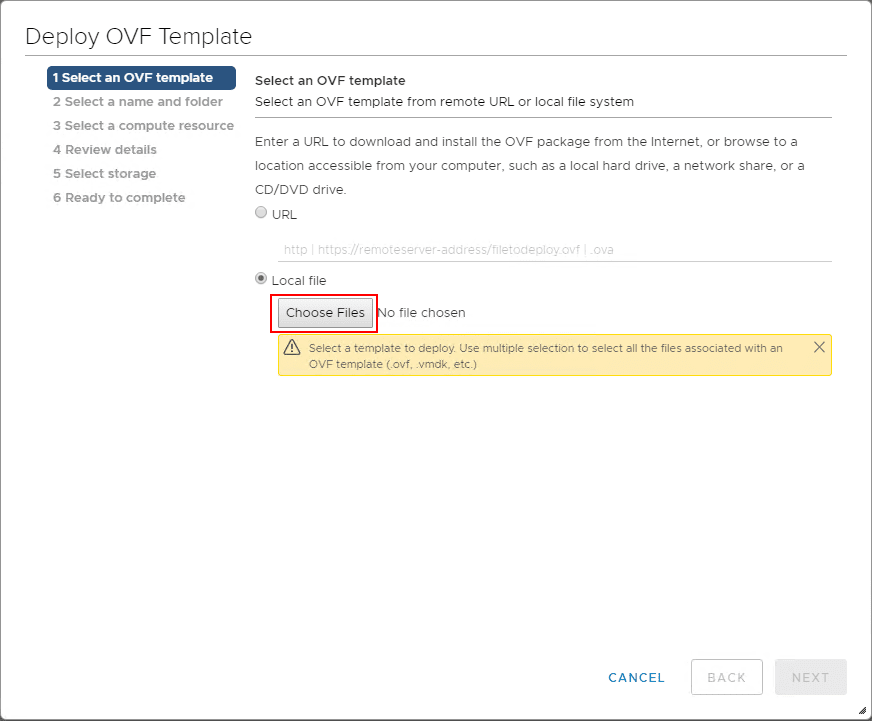
Here, we need to choose the vSphere_Replication_OVF10 files along with the support and system VMDK.
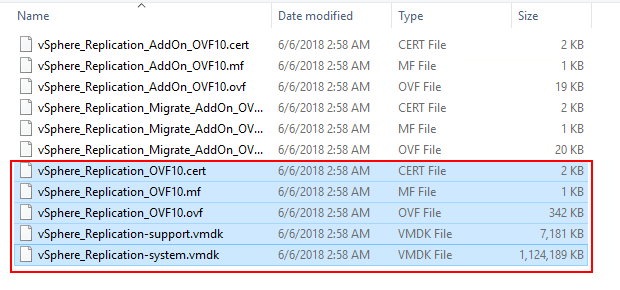
Basic OVF Template deployment begins.
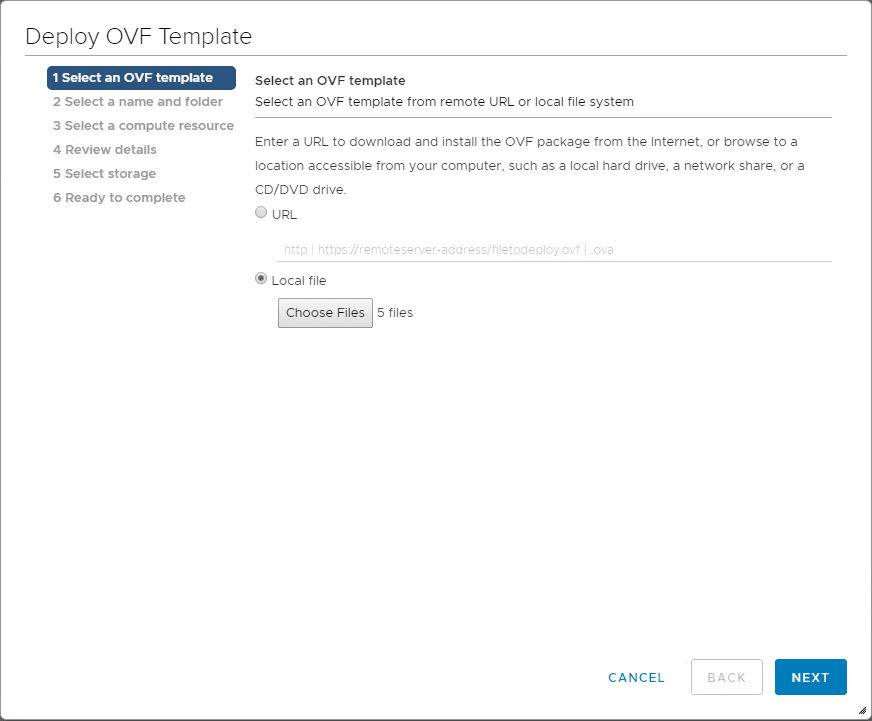
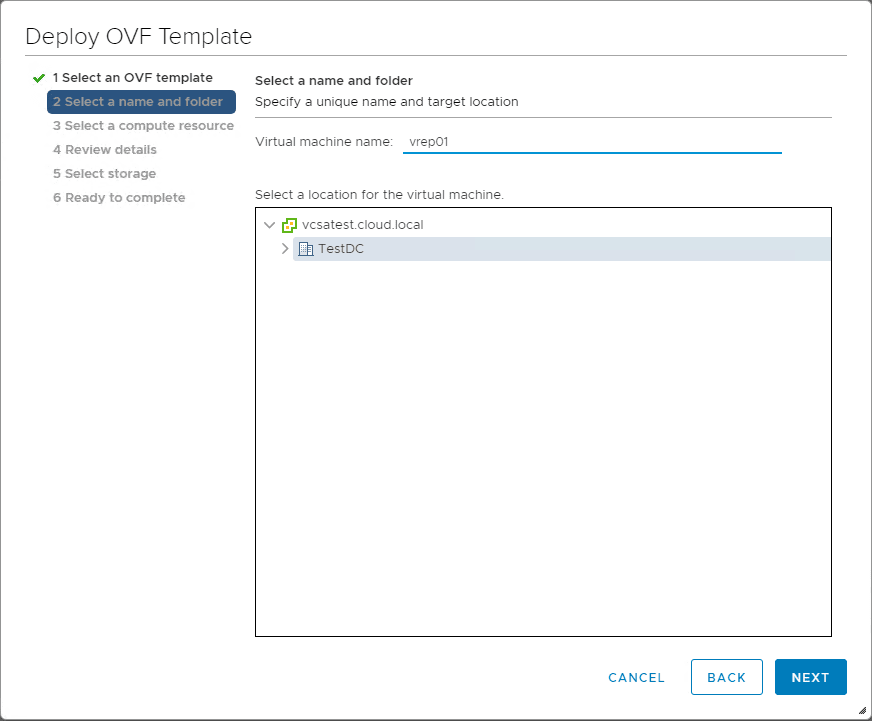
As you can see I simply have a one host “cluster” nested in a lab environment.
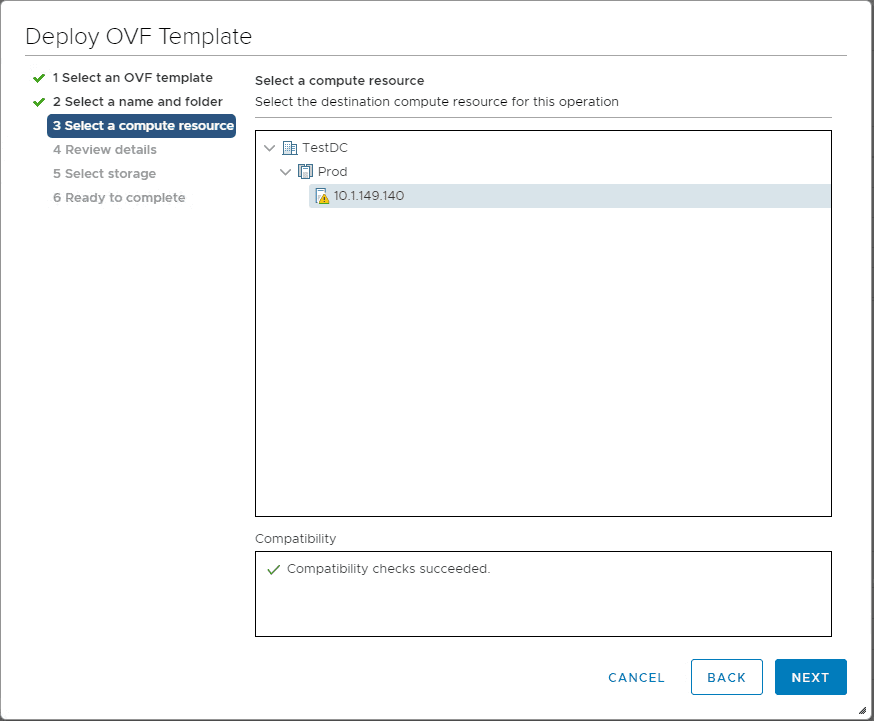
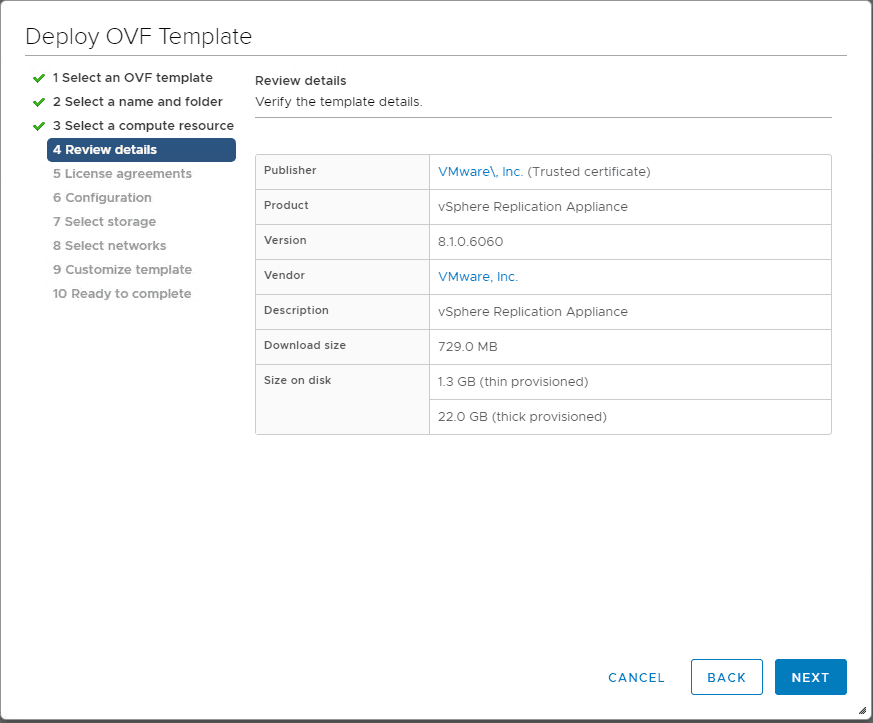
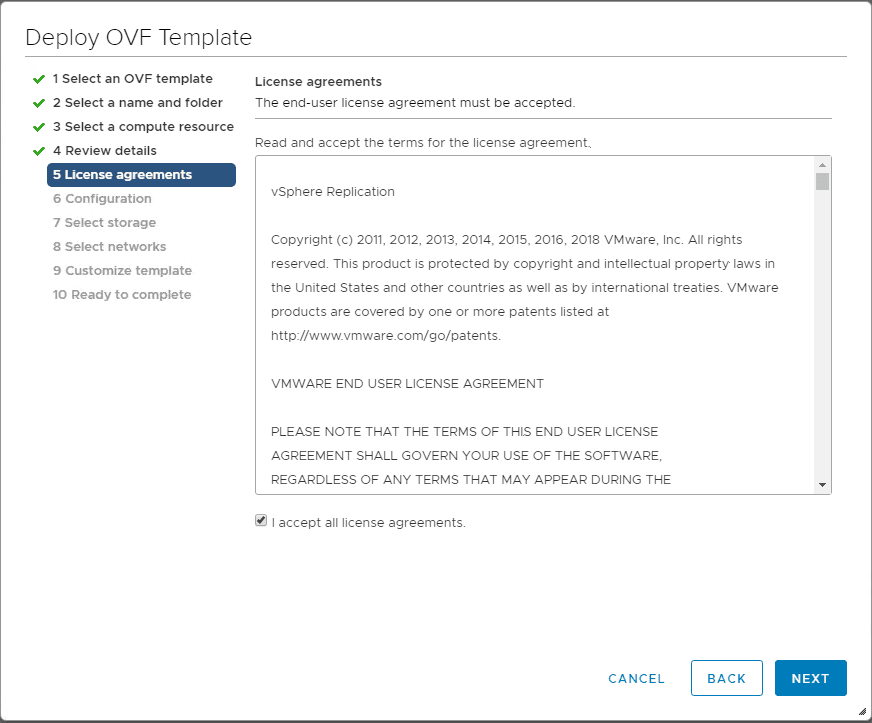
For lab purposes, I changed from the default (4) CPU configuration to 2 vCPU configuration.
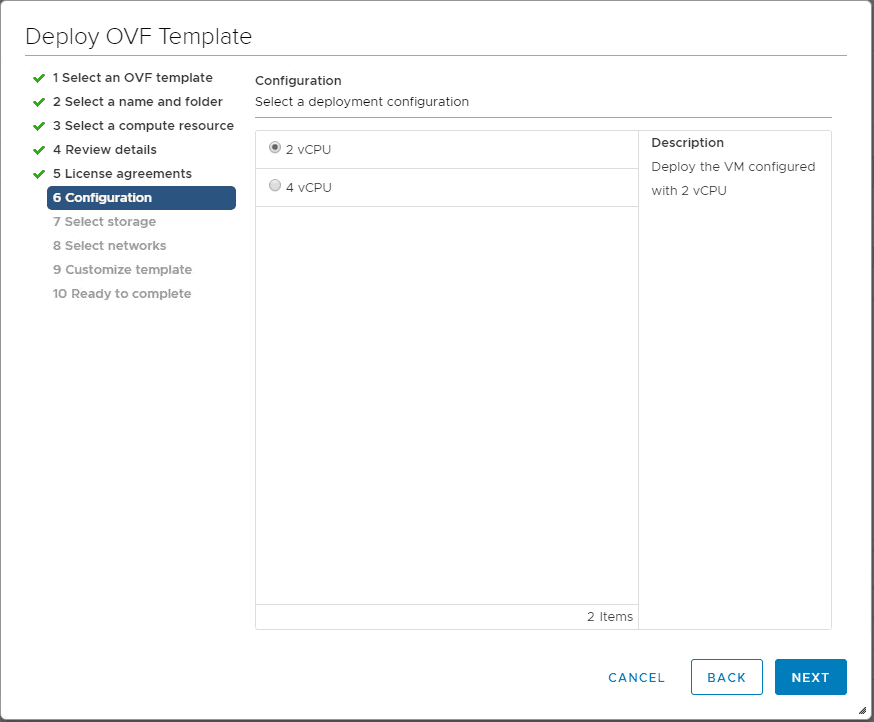
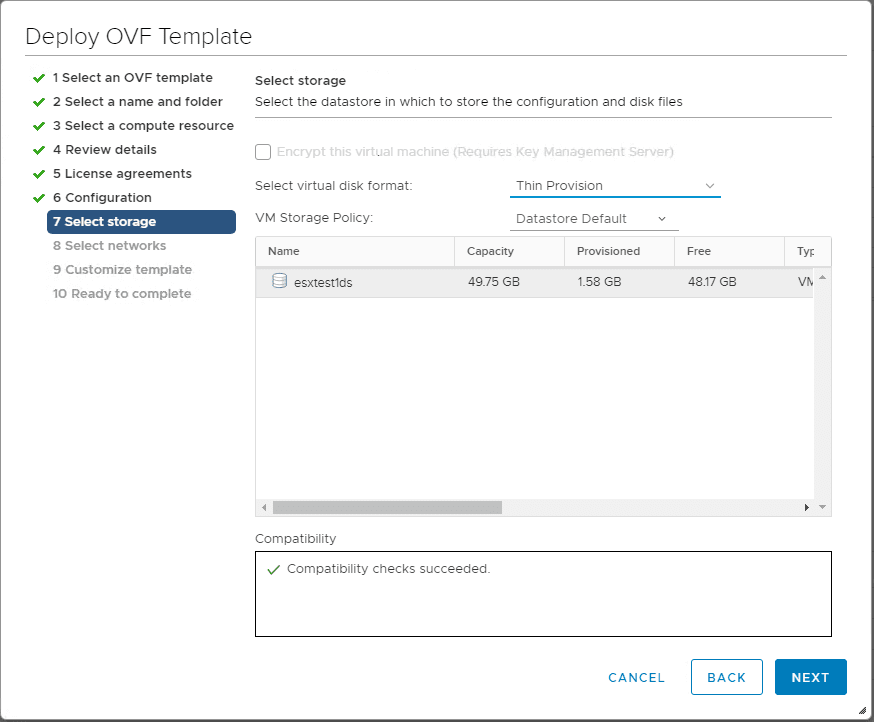
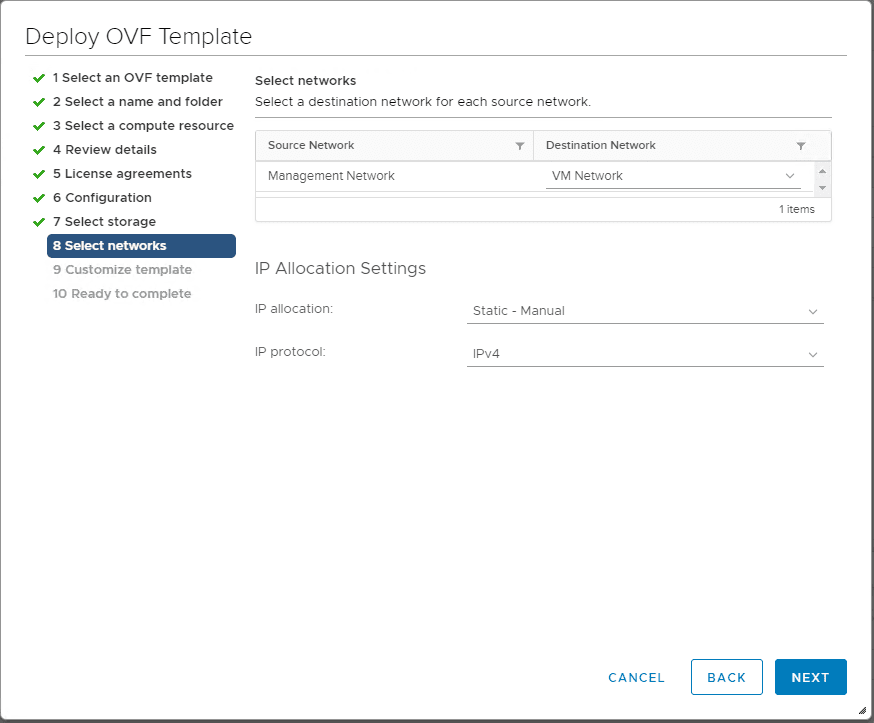
Be sure to pay attention to the configuration under the Customize Template, step 9. Here you have quite a bit of options that can be configured including, password, NTP, hostname, default gateway, domain, DNS lookup, DNS server, subnet mask, etc.
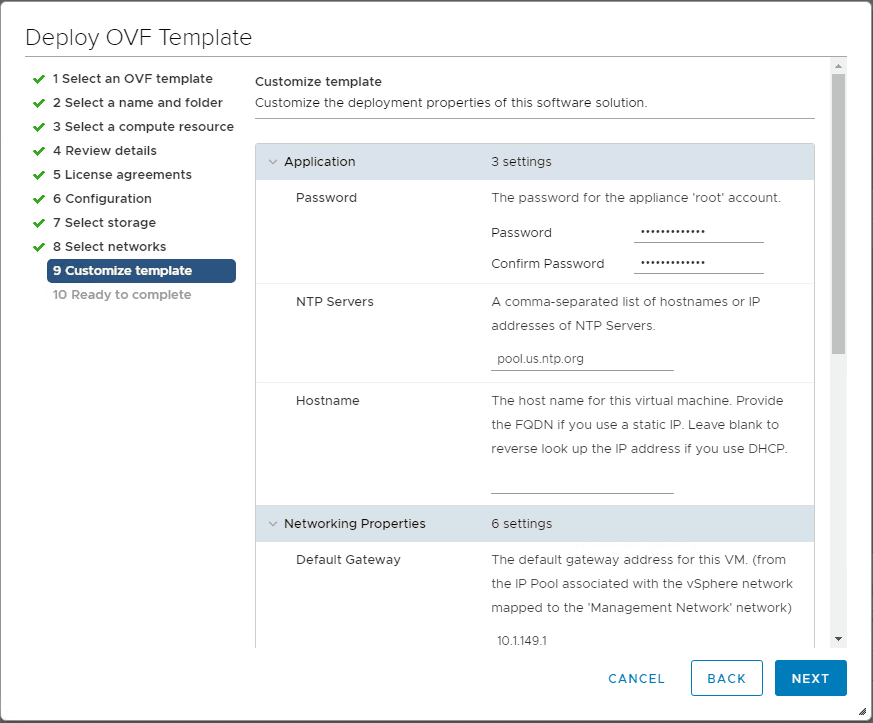
Ready to start the deployment of the appliance.
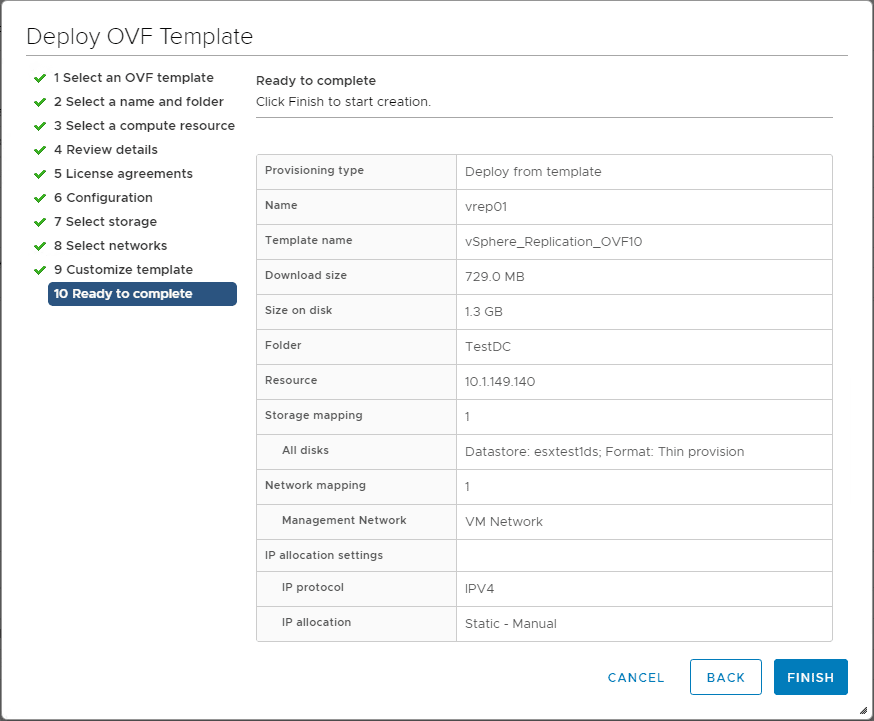
As noted in the outset, you will need to use the FLEX client. The FLEX client properly installs the vCenter Extension as noted by the vService bindings which is not present in the HTML5 UI OVF deployment.
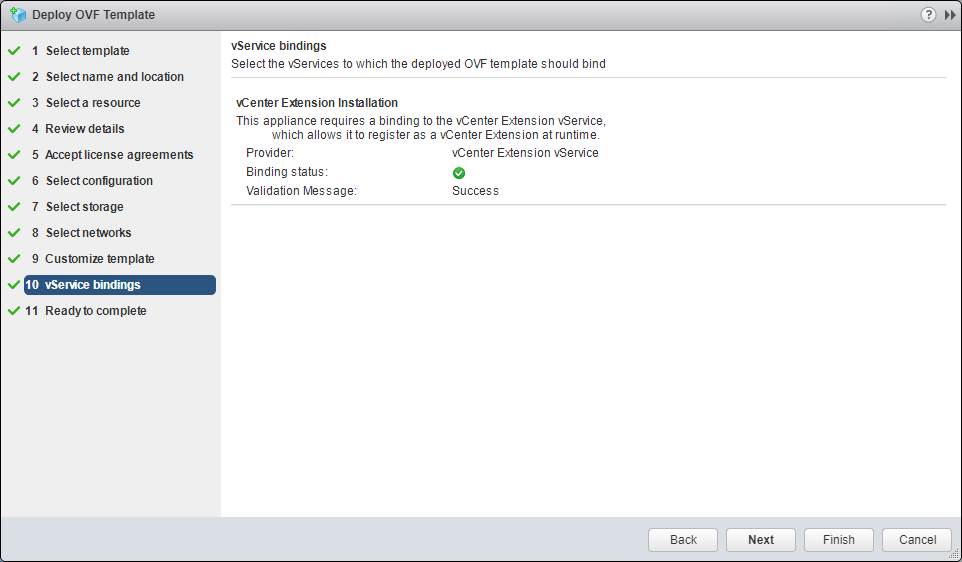
Registering VMware vSphere Replication 8.1 with vCenter Server 6.7
The next step that needs to happen is register VMware vSphere Replication with vCenter Server. To do this, login to your vSphere Replication 8.1 appliance in the VAMI interface or port 5480 to be exact.
- https://<replication appliance IP/FQDN>:5480
You will want to populate the SSO administrator password under the VR >> Configuration tab. Click the Save and Restart Service button after entering the password.
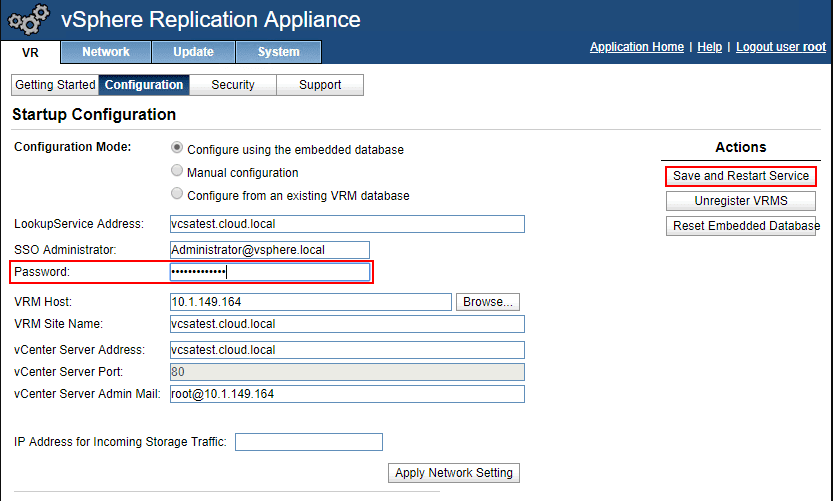
You will see a certificate warning. Accept the certificate.
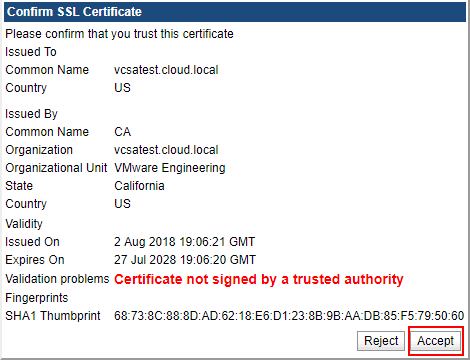
Services will restart.
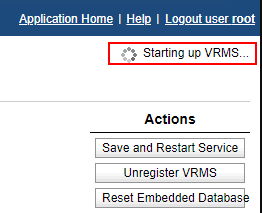
You will then see the Successfully saved the configuration message in green at the top.
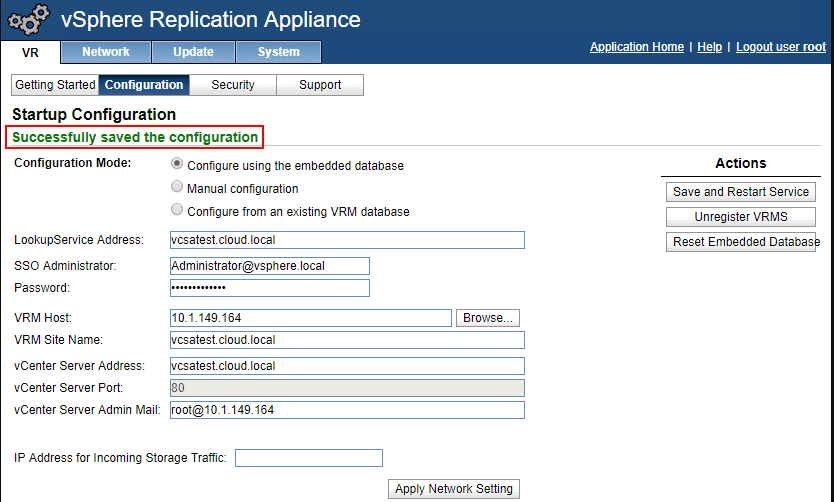
Configuring VMware vSphere Replication 8.1 and Creating Replication Job
In previous versions of VMware vSphere Replication, there was a separate shortcut that was created called vSphere Replications. However, VMware has consolidated this under Site Recovery. As you now see, both vSphere Replication and SRM reside under this shortcut. Click the Open Site Recovery now to configure even/only vSphere Replication.
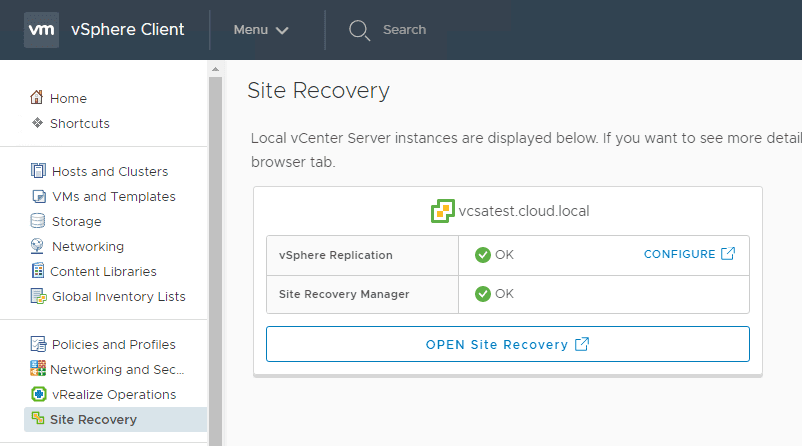
Note here, you can start to see the distinction. You can create New Site Pair or look at the View Details under the Replications within the same vCenter Server.
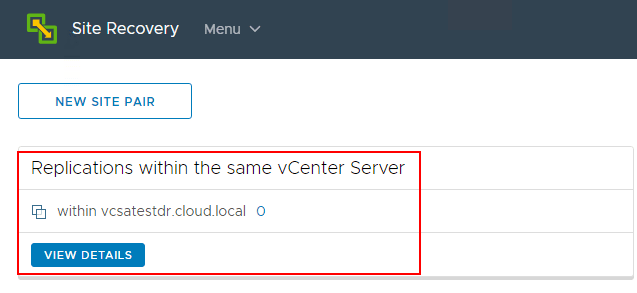
Under the Replications within the same vCenter Server, click the Site menu and you will see basic visibility and functionality as well as administration of VMware vSphere Replication.
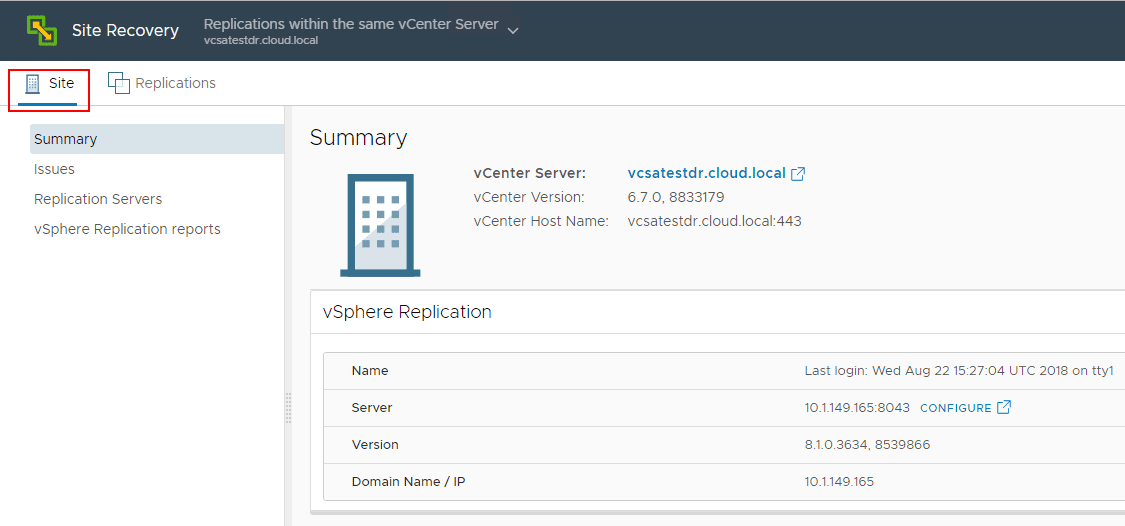
Here you can see your replication servers and their connection status.

If you click Replications, you can create a New VMware vSphere Replication job.
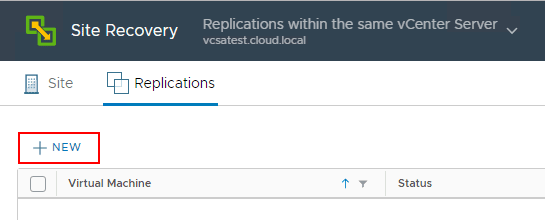
This launches the Configure Replication wizard. The first step is to choose the source virtual machine.
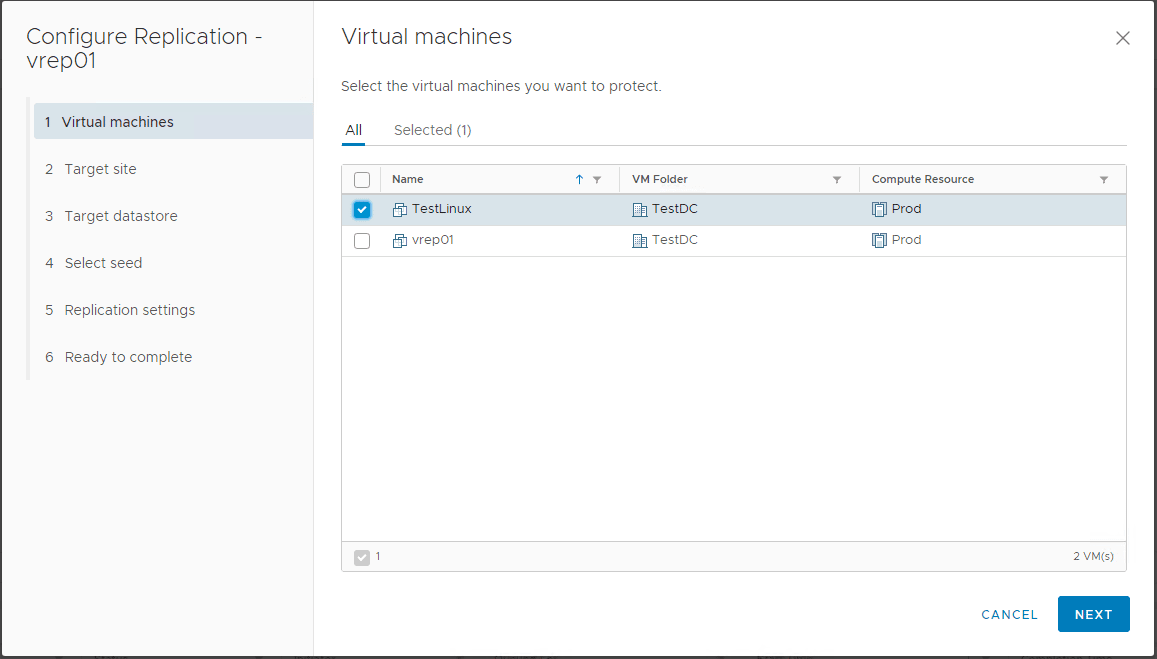
In the target site, since we are within the same vCenter and want to stay there for this configuration, you see the same vCenter server listed in the Target Site. I am leaving auto-assign selected for the vSphere Replication Server.
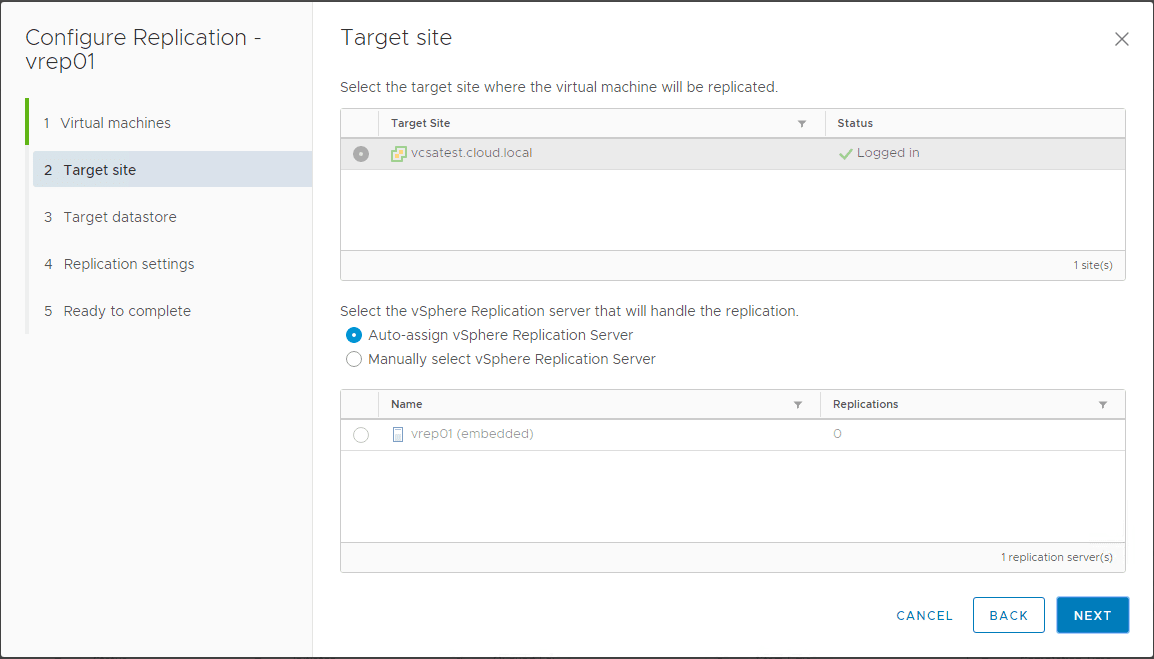
Next, the target datastore for my purposes of labbing, I am selecting the same datastore as the source. This will cause the wizard to find Seeding in place since it sees the same files on the same datastore. In real world scenarios, you can see how the seeding would benefit you if a different datastore located in a different site, VMware vSphere Replication is smart enough to detect existing data and start building from this.
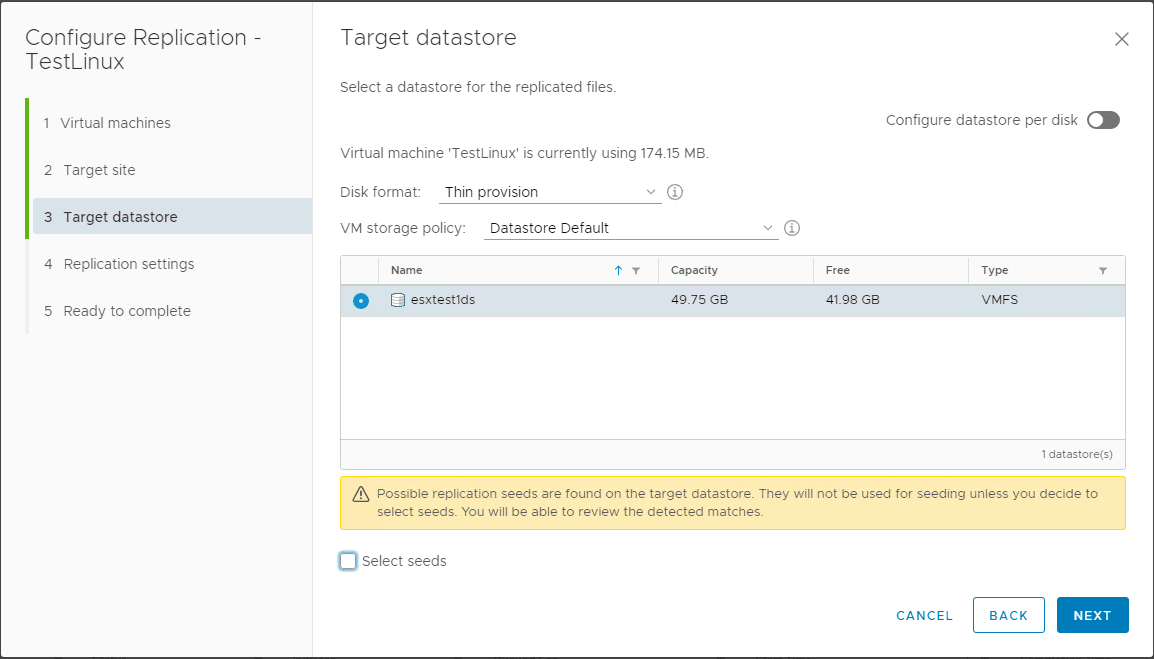
You can set the RPO for vSphere Replication down to as low as 5 minutes and also Enable point in time instances for additional recovery points.
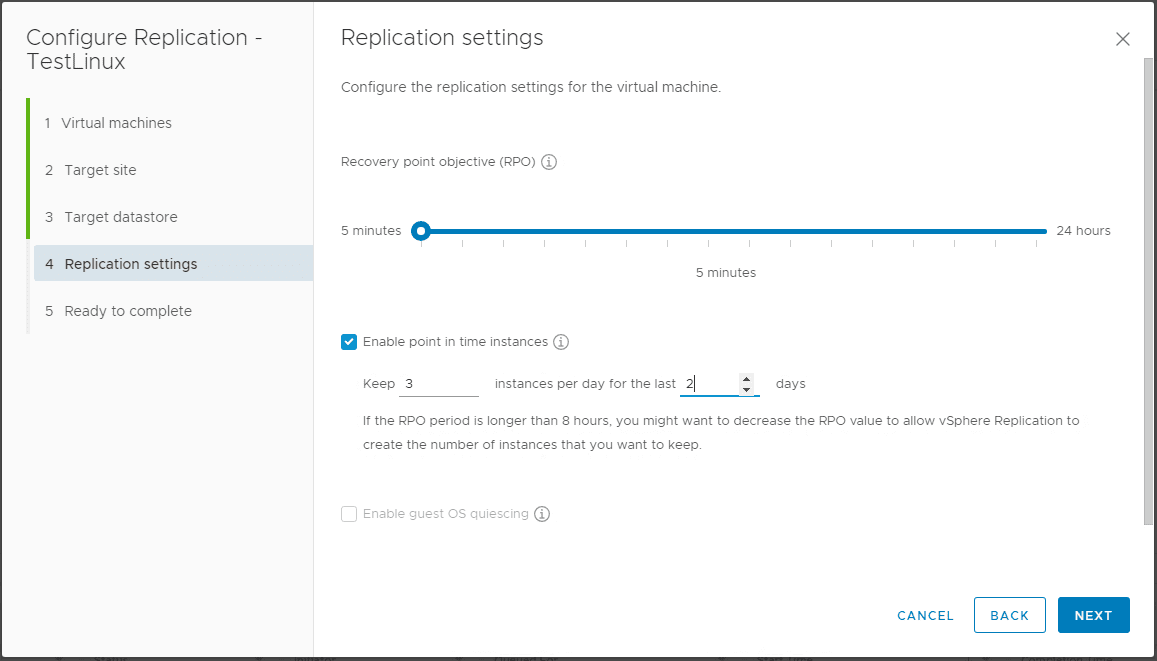
You are now ready to complete the replication job creation. Click Finish.
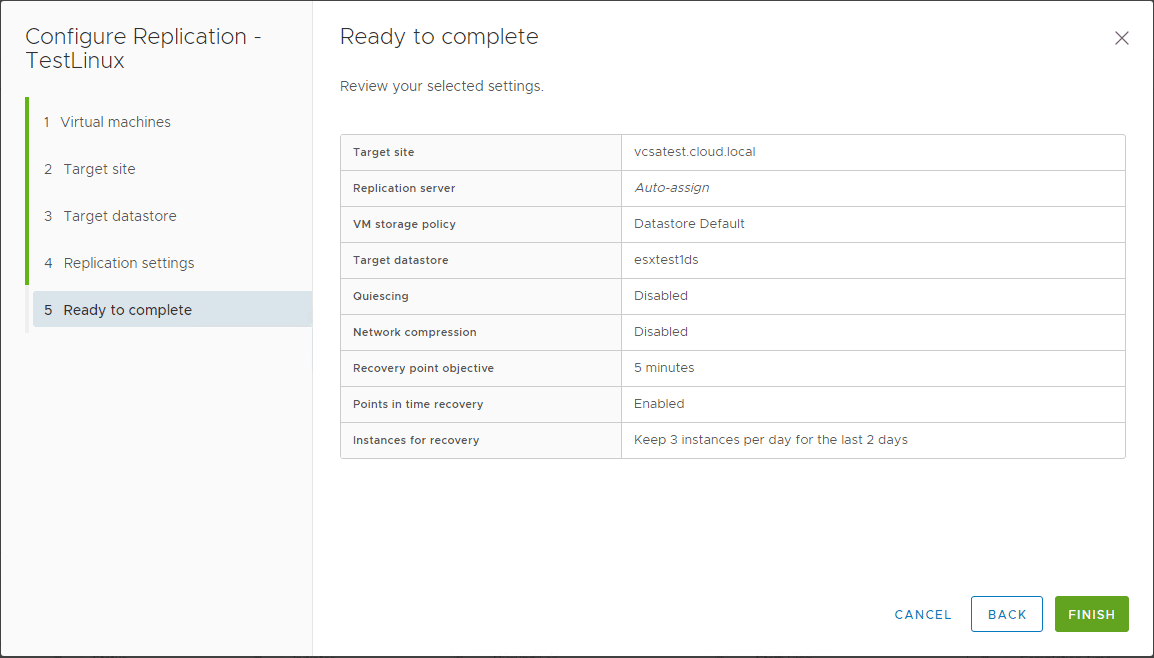
Under replications, you will see the newly creation replication job showing Not Active since the initial replication has not taken place yet. Place a check by the VM and you will then see the options available. One of those is the Sync Now option to force replication to start.

After syncing the replica, the VM status changes to OK after synchronization takes place.
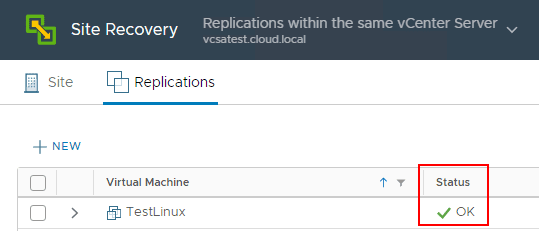
In taking a quick look at the target datastore which also happens to be the source datastore in my lab environment, I see the newly creatd folder with the virtual machine files in place.
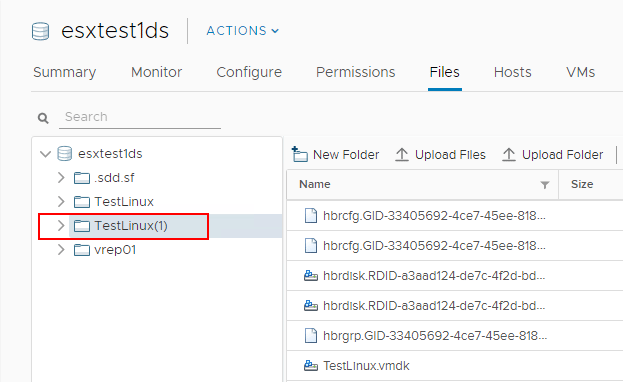
Replication has indeed duplicated the virtual machine files. Under the Replications tab you can expand the virtual machine and see the current statistics, status, and other pertinent information.
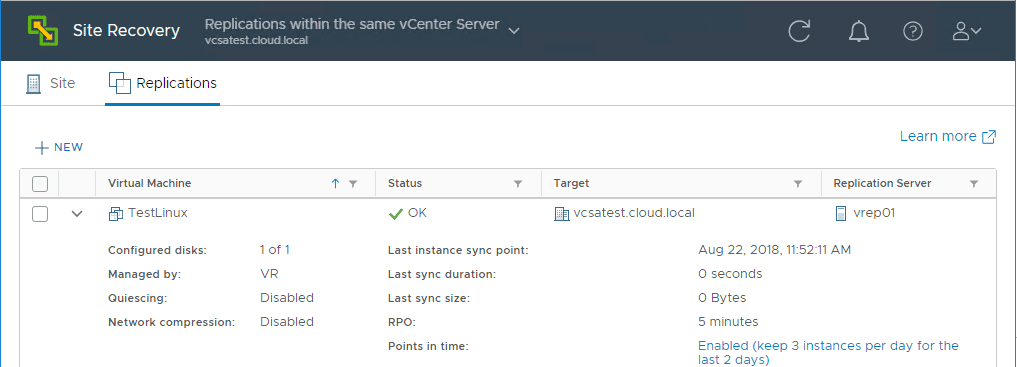
Takeaways
Installing and Configuring VMware vSphere Replication 8.1 in vSphere 6.7 takes only a few steps from deploying the OVF template to logging into vCenter to start configuring your first replication job. This includes registering the appliance with vCenter and the managing the replication server including creating new jobs. We will next take this a step further with integrating with SRM and see what the process looks like to integrated with different sites and vCenter Servers with SRM. Stay tuned.
Google is updating how articles are shown. Don’t miss our leading home lab and tech content, written by humans, by setting Virtualization Howto as a preferred source.

